The Destruction of the Memory of Jewish Presence in Eastern Europe;
A Case Study: Former Yugoslavia
Interview with Ivan Ceresnjes
The memory of the large pre-war Jewish presence in Eastern Europe is increasingly being destroyed. Part of this process is intentional; part is because of neglect of Jewish sites, monuments, and memorials.
The successor states of the Federal Republic of Yugoslavia provide a good case study of many aspects of the process of memory destruction. This federation's breakup over the past two decades has accelerated processes that are slower elsewhere. This concerns both attempts to change the collective memory of citizens, as well as the physical degradation of Jewish sites, monuments, and memorials.
All successor states are rewriting their histories. The memory of the Holocaust is thus also fragmented according to the national context. In the history of humanity the Holocaust is an unprecedented mega-event. This larger understanding, however, gets lost in societies where no historical research has been undertaken since the Second World War.
Collective memory will change further. Yet monuments and memorials stand while societies change. It is important that the physical Jewish infrastructure is not further degraded and that memorial sites in Jewish locations are well kept. The memorials make local people remember what happened to the Jews. For many, the existence of a Jewish memorial does not allow them to forget the crimes of the past.
Destroying Memory
"The memory of the large pre-war Jewish presence in Eastern Europe is increasingly being destroyed. Part of this process is intentional; part because of neglect of Jewish sites and memorials. To understand the various factors at work, one can best look at the former Federal Republic of Yugoslavia. Its breakup over the past two decades has accelerated processes that are slower elsewhere. This concerns both attempts to change the collective memory of citizens as well as the physical degradation of Jewish sites, monuments, and memorials. Monuments are usually built to commemorate a significant person or event in history, or a period of time. Memorials are usually related to death and destruction. But the distinction between the two sometimes is blurred."
Ivan Ceresnjes was the head of the Jewish community of Bosnia- Herzegovina and a vice-chairman of the Yugoslav Federation of Jewish Communities until his emigration to Israel in 1996. At the Hebrew University's Center for Jewish Art, established in 1979, he documents Jewish infrastructure such as synagogues, ritual buildings, and cemeteries in Eastern Europe. He also maps Holocaust memorials and monuments.
Ceresnjes furthermore assists the U.S. Congressional Commission for Protecting and Preserving American Property Abroad. Despite its name, this commission was created in 1985 for the survey and research of Jewish cemeteries, monuments, and memorials. Almost its entire emphasis is on Eastern Europe, because it is mainly there that this infrastructure is rapidly disappearing.
Ceresnjes remarks: "When people in Eastern Europe see or hear the words 'American property' it has a magic effect on them. Often when one tells that one is Jewish and has come to research the documentation of Jewish monuments, tombstones, and memorials, the reception is unfriendly. However, if you say that you are coming on behalf of the American government you are much better received."
The Role of Collective Memory
Ceresnjes reflects on the role of collective memory in society: "The upsurge of nationalism in Eastern Europe has led to an ideology of memory. In its most extreme form, nationalist ideologues consider that the main role of each generation is to transmit the memories of the previous one to the next.
"This ideological position claims that nations mainly exist to remember their past. In its extreme version the state, society, and economy are largely tools for promoting national memory. Economic growth frees people to spend their time on the recovery of memory. These ideologues say that societies should be dominated by memory-related activities.
"One does not even have to go that far. There is, for instance, the more moderate position that the recovery of memory in Eastern Europe was the essence of national liberation. Indeed, one of Stalin's major crimes was his destruction of national memories."
Ceresnjes comments: "However, focusing exclusively on changing collective memory without linking it to moral judgment remains highly problematic. In this context, attitudes in various countries toward Holocaust memorials need to be assessed. The case of Yugoslavia's successor states illustrates this in many ways."
Politically Correct Memorializing
"Similar to other once-communist countries, in former Yugoslavia memorializing has developed in new directions from the politically correct, general approach of the past. In the communist view the suffering of one group of citizens under Nazi Germany and its allies could not be separated from that of others. People were told that all citizens had suffered from both external and internal enemies.
"Many Europeans collaborated with the Germans. Croatia, for instance, had a murderous nationalist government of Nazi puppets. In most areas of Yugoslavia, members of several specific groups of people were murdered at the same time. It was rare to find a location where only Serbs, only Jews, only Gypsies, or only Croats were killed. Usually it was an ethnic mixture of people that might also have included-according to the local population configuration-Muslims, other enemies of Nazism, as well as fascists.
"After the Holocaust a new form of Jewish memorializing slowly emerged. It took place exclusively within the family at home. The next step was that memorials and monuments were gradually erected in places owned and used by Jews, such as synagogues and Jewish cemeteries. The latter were the more important since very few functioning synagogues remained in Yugoslavia. Putting up a memorial plaque was even considered a kind of protest against the communists because the Soviet Union usually didn't allow it. One would gradually find more memorial plaques or specific monuments, which mainly gave the numbers of Jews killed and listed their names.
"Very slowly in the early 1950s, specific monuments for Jews started to appear in public places as well as memorial plaques on institutions, not specifically connected to Jews. Thus, Jews were given a place in national history.
Memorializing in East European countries is closely connected to nationalism, which had been strongly suppressed under communist rule. The Soviet Union under Stalin had even annihilated a number of nations. Broadly speaking, however, Holocaust memorials were found only in very few places where the Soviet Union and communism ruled."[1]
Fragmentation of Holocaust Memory
"After the demise of communism, the outburst of suppressed nationalism destroyed the Federation of Yugoslavia. Seven independent countries have emerged, each of which rewrites its history. In Bosnia-Herzegovina the situation is even more complex. It is officially one country, but is inhabited by three nations-Muslims, Serbs, and Croats-who are writing their parallel histories that differ from each other in many ways. In this process, each one changes the names of streets and institutions, thus planting the seeds for a new collective memory.
"The memory of the Holocaust is thus also fragmented according to the national context. In the history of humanity, the Holocaust is an unprecedented mega-event. This larger understanding, however, gets lost in societies where no historical research has been undertaken since the Second World War.
"Nations also manipulate the count of victims. The numbers given for people brutally murdered at Jasenovac, a major Croatian concentration camp on the border of that country and Bosnia, vary from 50,000 to 1,200,000, with the most reliable estimate apparently being about 500,000."
Unattended Sites
Ceresnjes observes: "The murder of six million Jews in Europe has not only dramatically affected their families. It also meant that the great majority of Jewish sites in Eastern Europe became unattended. This includes a large number of synagogues, communal buildings, cemeteries, and other places that could become memorials of the former Jewish presence. In some countries the national Jewish community takes care of putting some plaques on buildings that were once synagogues, but this is a rather rare phenomenon.
"Sometimes governments or local authorities mark Jewish places. They frequently do so because they want to catch the attention of the Western world and show that the Jews are part of their history. Often, though, they nurture the memory of the murdered Jews and the communities that disappeared without elaborating on how and why this happened.
"Germany is the one country where a large part of the remnants of the Jewish past is relatively well taken care of. On Kristallnacht, 9-10 November 1938, many synagogues were burned, which was part of the erasure of Jewish presence and memory. Over the past fifteen years we have documented over one thousand rural Jewish synagogues and several thousand Jewish cemeteries in Germany. The overwhelming majority of these are well maintained by the local municipalities.
"In Eastern Europe two major factors are at work regarding Jewish memorials. The first is that usually no specific monuments to murdered Jews were established. The second is that memorial sites where Jews were murdered are being destroyed or disappearing.
"The emergence of suppressed nationalism in the successor states to Yugoslavia has created the desire to rewrite history. This affects the history and memory of the Jews. It is a fairly widespread phenomenon that specific nations try to erase all victims of the Nazis other than those from their own nation. In this process the names of Jewish victims also disappear.
"Sometimes in Serbia, for instance, the names of Jews are maintained next to those of Serbs, while those of victims of all other nationalities are deleted. Furthermore, often monuments throughout Yugoslavia that were damaged during the wars of the 1990s are not being repaired because of a lack of consensus on what should be memorialized on them. Understanding the developments and the current situation requires discussing individual countries."
Serbia
"Before the Second World War there was a strong Jewish community in Serbia. It numbered thirty thousand, of whom six thousand survived. Jews also have an important place in Serbian history. Like the Serbs they were oppressed by the Ottomans. Jews started getting civil rights in the Serbian kingdom, which were only fully granted before the First World War. These were maintained in the Kingdom of Yugoslavia, which was established in 1919.
"During the Second World War, Serbia was a puppet state ruled nominally by collaborating Serbs but, in actuality, by Germans. Serbs, except in some extreme cases, did not themselves kill Jews. In northern Serbia many local Jews were murdered by Germans and Hungarians. In February 1942 in Novi Sad the Hungarian occupiers gathered Jews and some Serbs, brought them to the middle of the frozen Danube where they had dug a hole in the ice, and killed four thousand people. Elsewhere Serbs gathered Jews and handed them over to the Germans, a crime that is suppressed and forgotten in Serbian history.
"In the Jewish cemetery in Belgrade there is a monument to the Jewish soldiers who fell in the First World War. In almost every Jewish cemetery the dead of that war are remembered. As far as the two Balkan wars are concerned, there is only one monument in Serbia that explicitly mentions the Jews. It is in a public space by the town of Nish near the country's eastern border. It commemorates those who died in the battles against the Bulgarians in the 1913 Second Balkan war. Three sides of the monument have plaques with Serbian names; the fourth has Jewish names. At its bottom is written: 'They fought and died for the homeland.'
"In Nish, about a thousand Jews were butchered to death during the Second World War; only one member of the community survived. The Jewish cemetery in the town dates back to the seventeenth century, but it has been destroyed because Gypsies have settled on it in recent decades. There are other towns in former Yugoslavia where Gypsies have set up their villages on Jewish cemeteries because they know nobody will come to reclaim them. Among these are Djurdjevac in Croatia, Zabalj in Serbia, and Dojran in Macedonia.
"On Serbian monuments to the fallen in the Second World War, Serbs and Jews are presented in various ways such as victims of 'Nazism, Croatian Nazism, European Nazism, German Nazism, Hungarian Nazism,' and so on. When the Serbian nationalist movement began at the end of the 1980s, a new Serbian-Jewish Friendship Society was created that erected some war memorials. It was quite strong during the 1990s but by now has few members left."
Jews Are Again Guilty
"For the Jewish community of former Yugoslavia, inter-ethnic ties of this kind were generally attempts to manipulate and misuse Jews in wider ethnic conflicts in a country that was collapsing and disintegrating. In Croatia there is a Croatian-Jewish society that supported the Croatian fight again Serbian domination. I consider it a major success that in Bosnia-Herzegovina the Jewish community managed not to be dragged into supporting one side or the other.
"Since Serbia lost the recent wars, its history had to be twisted and hence its collective memory as well. Somebody had to be blamed for the loss of Serbian supremacy in Yugoslavia, the defeat in the recent wars, and the outcome of the Kosovo crisis when Serbia was aerially bombarded by the Western powers. These were Serbia's former allies in the fight against Germany during the Second World War.
"One then started to hear in some circles that the Jews had played a major role in Serbia's defeat. Henry Kissinger was a famous American name in Serbia, though he has been out of government for a long time. In the Clinton administration, Secretary of State Madeleine Albright, Assistant Secretary of State Richard Holbrooke, and Defense Secretary William Cohen were all perceived as Jews. Thus, in several Serbian blogs and internet forums one could read that Jews created the crisis in Serbia, organized its bombardment, and were responsible for its defeat."
Bosnia-Herzegovina
"During the Second World War most of what is now Bosnia-Herzegovina belonged to the Croatian puppet state. The exception was part of Herzegovina, which was governed by the Italians until 1943, after which it passed under direct German rule.
"Before the war there were 28,000 Jews in the country, 3,000 of whom survived. Most Jews lived in Sarajevo; all other communities were small. The main war monuments in Sarajevo were built by the communist government. The Jews built one on the grounds of their huge sixteenth-century Sephardic cemetery there. In the war of the mid-1990s, both Bosnian Serbs and Muslims engaged in the battle for Sarajevo trained their artillery on the monument.
"In Travnik, one of the smaller Bosnian communities, a monument to the murdered Jews was created by putting the three oldest tombstones together and making them into a Holocaust memorial in the Jewish cemetery. The head of the Jewish community did not participate in this project, but gave his approval.
"In Banja Luka, the Jewish cemetery was erased to make room for a tennis court. In the general cemetery there is now a small Jewish compound where there is a monument to those Jews who fought in the Second World War as well as those who died in the Holocaust.
"In Mostar, there is a memorial cemetery for partisans who fought against the Germans. In the town's Jewish cemetery there is a modest monument to the Jewish partisans only. There, also a few years ago, the small Jewish community of Mostar erected a monument memorializing the victims of the Holocaust.
"The town of Donji Vakuf is now in the Muslim part of Bosnia. When the original war memorial was built in 1965 it contained the names of the victims of all nationalities. Now it is one of those memorials where only Muslim names remain.
"Sometimes one finds people who go out of their way to preserve Jewish memory. In the town of Brcko on the Sava River in northern Bosnia-Herzegovina, the Jewish cemetery has been destroyed as part of the town's urbanization plan. The Orthodox parish priest requested my permission and rescued four tombstones there that he turned into a Holocaust memorial, which is now located in the Bosnian-Serb cemetery."
Sarajevo
"In Sarajevo, the Jewish community was forced to donate the largest synagogue to the city in 1965. Later it was turned into a cultural center. There a stone menorah (candelabrum) was set up, which indicates that this building had earlier been the town's largest synagogue.
"The major Second World War memorial in the Bosnian capital of Sarajevo is in a dilapidated state. Fourteen thousand people murdered in the war are memorialized there. There is an inner section that recalls the Jewish victims specifically, with over seven thousand names. This memorializing of the Jews in the general section, even though there is also a special section for them, is unique in the world.
"The memorial was severely damaged in the war of the mid-1990s as it is adjacent to a fortress. Many letters fell off the memorial because of explosions and, after the war, almost all of them disappeared. In its Holocaust sections only a few stone letters remain from the names of the local Jews who were murdered. If one visits there today and doesn't know what was there originally, one will not recognize that it was a specific monument to the Holocaust. The removed letters are sometimes affixed to crosses, which is an ultimate insult. It shows that the Jewish past is not part of the collective memory.
"The monument is likely to be rebuilt and the Bosnian government is applying for funding internationally. I'm concerned that there will be additions relating to the war of the 1990s and also, insofar as the Second World War is concerned, new political choices about who were the perpetrators and who the victims.
"In the Croatian part of Bosnia-Herzegovina there is only one partisan memorial that also mentions Jews. That area was overwhelmingly pro-Nazi during the war when it belonged to Croatia. Hardly any partisans there were memorialized after the war. Since the fall of communism, these partisans have been seen as enemies because they were communists who killed priests, monks, and other Croats.
"There are about twenty small sites that were either concentration and extermination camps or prisons scattered all over Croatia, Serbia, and Bosnia. In none of these are the Jewish victims mentioned specifically. A typical example is a 'small' extermination camp, Kruscica, near Travnik in Bosnia. There three thousand people were killed by the local residents during the two months of its functioning, among them one thousand Jews. The Italian occupation army was located only twenty kilometers from there and, after they complained about the cruelties, the camp was closed.
"Two entire Jewish communities were murdered there yet Jews are not referred to on the Kruscica monument, which only mentions the Serbian and 'communist' victims. The latter usually refers to Muslims. Those now living near the site are the children or grandchildren of the murderers."
Changing Collective Memory
Ceresnjes explains that the Bosnian Muslim authorities want to find a new place for their country in history. "They are creating monuments that are connected solely to Islam. They aim to have the outside world recognize that Bosnia is a purely Islamic region of Europe. One example concerns the ancient market area of the country's capital, Sarajevo. It was burned down after the Second World War by the communist authorities, despite the fact that it had major artistic and historic value.
"For the communists this past had to make place for an area that was indicative of the bright-red-painted future their rule would bring. Twenty-five to thirty years ago the old market area was restored. It is now a center for kitsch where souvenirs and cheap merchandise are sold.
"When I was chairman of the Bosnian Jewish community I claimed that there were Jewish buildings and sites from our five-hundred-year-old history that met the highest criteria of UNESCO's World Heritage List. When I applied for their restoration, the then Bosnian authorities told me that the market complex of Sarajevo had their highest priority.
"The Old Sephardic synagogue of Sarajevo dates from 1567 and was in use until 1941. By then it was the oldest synagogue in the Balkans as all others had either been rebuilt, redone, or destroyed. It took us twenty years to convert it from an empty ruin to the Jewish museum that it now houses.
"In Bosnia a clash of collective memories takes place. Muslim collective memory is different from that of Christians and Jews. History, however, is very different from memory. Until 1991, Bosnia was perhaps the most ethnically mixed society in Europe. Thus not only the telling of history but also collective memory should reflect that fact, even if Bosnian society is now sharply divided along ethnic lines."
Croatia
"Before the war there were twenty-eight thousand Jews in Croatia of whom four thousand survived. Today very few Jews remain in Croatia, most of them living in Zagreb. There are also three small communities on the coast in Split, Dubrovnik, and Rijeka.
"The situation in Croatia is very different from that in many other parts of former Yugoslavia. The Croatians are very well aware that Jasenovac, because of the brutality of the killing, is among the notorious concentration camps of the Second World War. Franjo Tudjman, the first Croatian president after the country broke away from Yugoslavia, falsified history. Against the overstated claim of the Serbs that in Jasenovac 1,200,000 were murdered, he strongly understated the number of victims as 20-50,000. He then claimed that only a few thousand of them were Jews and accused them of having been kapos and responsible for the killings there.
"Tudjman even published this in a book, leading to an outcry among international Jewish organizations. Tudjman then dropped the chapter where it was mentioned, also because he wanted to established relations with Israel.
"In the Serbo-Croatian war of the 1990s the Jewish community of Croatia decided to be politically correct. They issued a number of strong statements against Serbian attacks and the occupation of part of Croatia. Hence, during that war they had an honorable place in Croatian society.
"After it ended the Jews raised the issue of restitution for Jewish assets that had been stolen by Croats during the Second World War. The authorities discreetly warned the Jewish community that they should not make too much noise. If the Jews were to regain factories and other properties, it might lead to many Croats losing their jobs as the new owners could then choose who would work for them. Restitution with support from the outside might spark a reaction in Croatia that could endanger the remaining Jews."
Telling History
"Nowadays history is told more or less correctly in Croatia. Monuments commemorating the Holocaust were not destroyed during the war with Serbia. This, however, is mainly because there were so few to begin with. In Jasenovac in the early 1970s, a monument was built to the victims and it mentioned the Jews as well. It listed Serbs, Jews, Gypsies, Croats, and communists, but only in general as victims of fascism. There were no names and no numbers.
"The word Holocaust has been mentioned there only in the last few years, after the memorial was repaired because of extensive damages it suffered during the war in 1992-1995. The whole concept was then altered and now only numbers are on display, without names and nationalities of the victims. There is no separate memorial for the Jews. The most accurate estimate of Jews murdered in Jasenovac is in the area of twenty-five thousand.
"In recent years Holocaust monuments have been regularly vandalized and covered with graffiti. This is done by neo-Nazis who use the 'U' symbol for the Ustashe movement, which collaborated with the Nazis during the Second World War. Swastikas are another symbol frequently used in vandalizing memorials. They are also put on other monuments to those murdered by Germans and their allies in the Second World War.
"One sign of change in collective memory is that the Croats are increasingly bringing up the story of the murders in Bleiburg in Austria. After the Second World War the British allowed Tito's army to cross into their zone of Austria. There they slaughtered a mixed group of German allies including Serbian nationalists, members of the Croatian Ustashe, White Guards of Slovenia, Muslim pro-Nazi militias, ethnic Germans, and so on. Among them were also civilians including politicians, peasants, women, and children-almost anyone."
Macedonia
"In Macedonia before the Second World War there were 7,000 Jews. About half of them managed to escape to Albania where they were safe. During the war Macedonia became part of greater Albania; yet it was the Bulgarian government that ruled there. While it protected the Jews in prewar Bulgaria, those in Macedonia were transferred to the Germans who sent them to their death in Treblinka.
"There is a Jewish memorial in all Macedonian towns where there was a Jewish community before the war whose members were murdered, such as Bitola (Monastir), Shtip, Idrizovo, and others. It is usually located where the Jews gathered for deportation or where the synagogue was. There are also plaques at other locales.
"In the capital, Skopje, the Jewish cemetery was almost entirely destroyed by an earthquake in 1966. A very distinguished war memorial was erected in the new section of the Jewish cemetery. There are three memorials for the Jews in the town: at the place where the Jews were gathered for deportation, at the location of the communal buildings, and in the former cemetery."
Other Successor States
"Slovenia was under German rule during the Second World War. The small Slovenian Jewish community numbered 250 before the war. Of these about fifty survived, most of whom had fled to Italy. Many Jews fought in the anti-Nazi partisan units. Toward the end of the war the partisans threw out anyone who didn't have a Slovenian name. The Jews were all Ashkenazi and had German or Hungarian names, and the Slovenian partisans killed most of them.
"Before the war the number of Jews in Montenegro was very small. The country had maintained an anti-Jewish policy over hundreds of years. Already 350 years ago the Orthodox prince-bishop ruler decided that no Jews should live in the country because they were 'Satan's seed.' There were only some Jews who lived in the Catholic areas near the sea.
"During the Second World War the Italians were in control in Montenegro but the Germans were present. Wherever Italians put Jews along with communists in prisons, the Germans would kill them. These were Jews from other parts of Yugoslavia captured in the territory of Montenegro. The estimated number of Jews murdered is about twenty. The main prison, Bogdanov kraj near Cetinje, has no memorial and nobody tends to it. But for the Jews it is a place that should be memorialized.
"In Kosovo there were about 500 Jews before the Second World War, of whom 250 were handed over to the Germans by Kosovar Albanians. There were also a few examples where Kosovars killed Jews, and there was also a Kosovar SS unit. About twenty righteous gentiles helped the other 250 Jews escape to Albania where the Jews were protected.
"After the war, in Kosovo's capital, Pristina, a huge memorial was erected for all victims of Nazism including the partisans and the Jews. When the Serbian-Albanian fighting broke out in Kosovo in 1999, almost all names were removed, also including most of the Albanians who were considered communists. Kosovo is such a tightly knit society that everyone knows who was or wasn't a communist."
The Jew as an Instrument in National Policies
"Jews are instruments in the current politics of the successor states of Yugoslavia. This is part of these states' international positioning. If you visit Bosnia today and say you are a Jew, you will be told that Jews came there five hundred years ago and were embraced. They will add that Muslims and Jews were the best friends in the world. This is a fallacy because Jews were second-class citizens like anyone who was not a Muslim.
"Even worse, when one looks at pictures from 1941 of the looting of Jewish synagogues, shops, and apartments, one sees people wearing a fez. Germans didn't wear fezzes, neither did Croats, only Muslims did.
"When the Republic of Bosnia was established in 1992, only three constituting minorities were given the right to elect members of parliament: Muslims, Serbs, and Croats. There are, however, twenty other minorities in the state such as Poles, Slovenians, Jews, and Gypsies, who are not necessarily happy with this arrangement. They can only be elected if one of the three larger minorities elects them. So, for instance, the present Bosnian foreign minister-a Jew, Sven Alkalay-joined the Muslim government party SBiH (Party for Bosnia and Herzegovina) of Prime Minister Haris Silajdzic.
"In Serbia there was a Jewish deputy prime minister, Zarko Korac (2002-2003). Even under the anti-Semitic President Tudjman in Croatia there were Jewish ministers-Nenad Porges, economy, and Andrija Hebrang, health and social policy-in two successive governments from 1990 to 1998. These are examples of showcasing and one wonders whether these appointees actually do any good for the Jewish community.
"The situation in all these countries is in flux. Questions will increasingly be asked about the erasing of names of other nationals by the various successor states. Collective memory has changed and will change further. Yet monuments, if not harmed or altered, stand while societies change.
"One can only wonder what will be the role of the Jews while new collective memories are developing. For that reason, too, it is important that the physical Jewish infrastructure is not further degraded and that memorial sites in Jewish locations are well kept. The memorials remind local people what happened to the Jews. For many, the existence of a Jewish memorial does not allow them to forget."
Interview by Manfred Gerstenfeld
* * *
Notes
Publication of this issue was made possible in part by the support of the Conference on Jewish Material Claims against Germany (Rabbi Israel Miller Fund for Shoah Research, Documentation and Education).
[1] See, e.g., Mordechai Altshuler, "Jewish Holocaust Commemoration Activity in the USSR under Stalin," Shoah Research Center, Yad Vashem, www1.yadvashem.org/odot_pdf/Microsoft%20Word%20-%205422.pdf.
* * *
Ivan Ceresnjes was the head of the Jewish community of Bosnia-Herzegovina and a vice-chairman of the Yugoslav Federation of Jewish Communities until his emigration to Israel in 1996. During the civil war in Bosnia-Herzegovina he organized rescue efforts to evacuate Jews and non-Jews and also organized nonsectarian humanitarian relief for citizens of the besieged city and other parts of the country. An architect by profession, he is presently employed by the Center for Jewish Art of the Hebrew University of Jerusalem. There he documents Jewish infrastructural objects such as synagogues, ritual buildings, and cemeteries in Eastern Europe. He also maps Holocaust memorials and monuments.
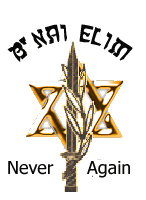














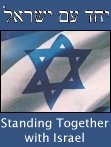

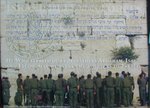

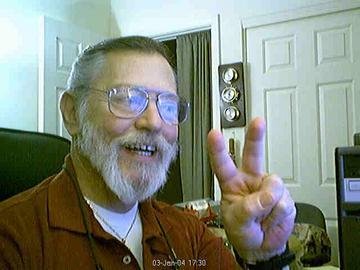






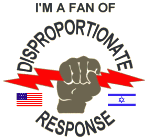



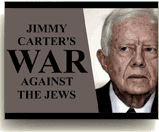
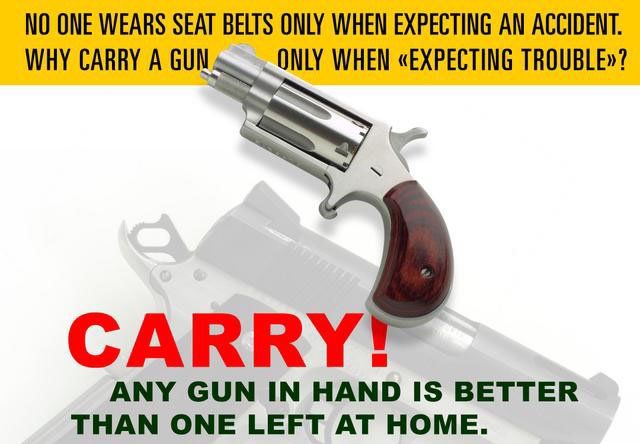
 While doing IDF (Israel Defence Forces) reserve duty on a mountain overlooking the
While doing IDF (Israel Defence Forces) reserve duty on a mountain overlooking the 

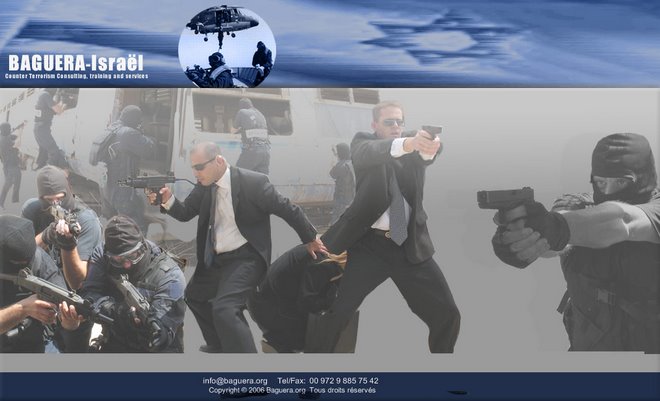



No comments:
Post a Comment